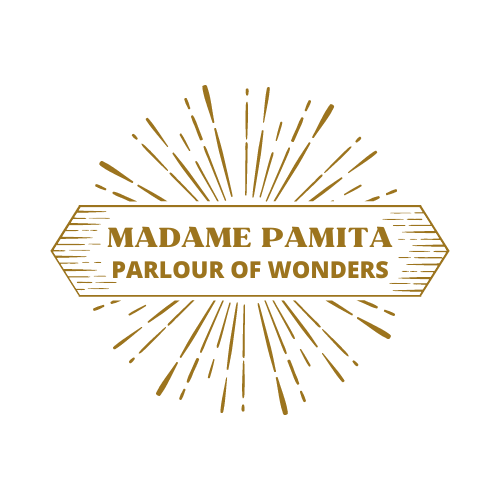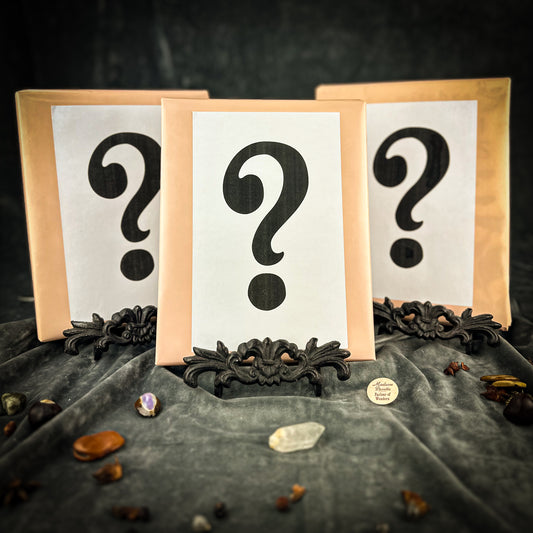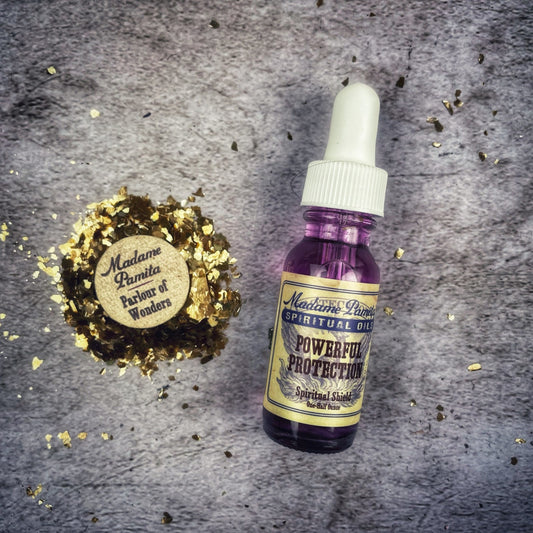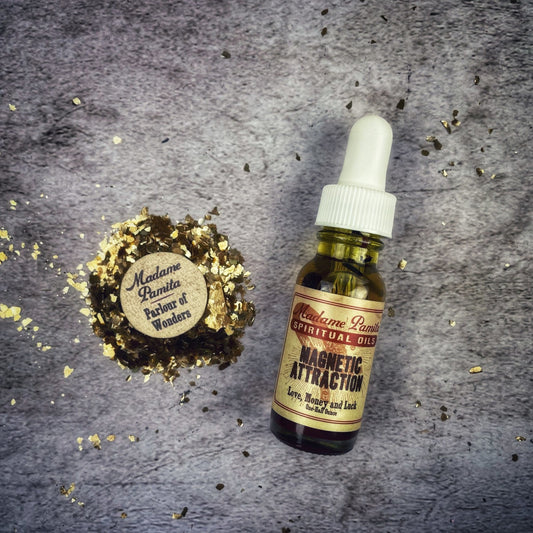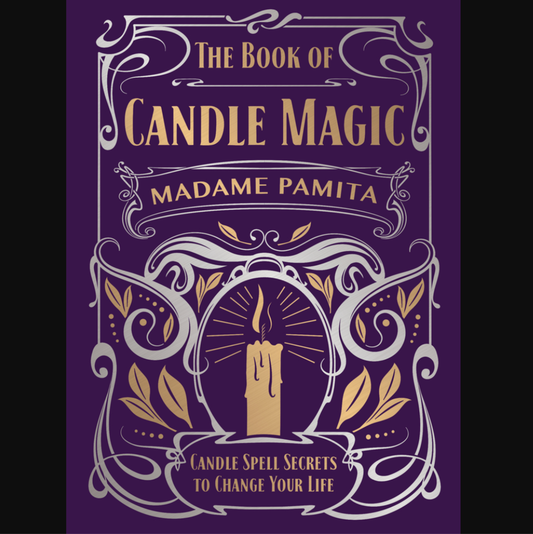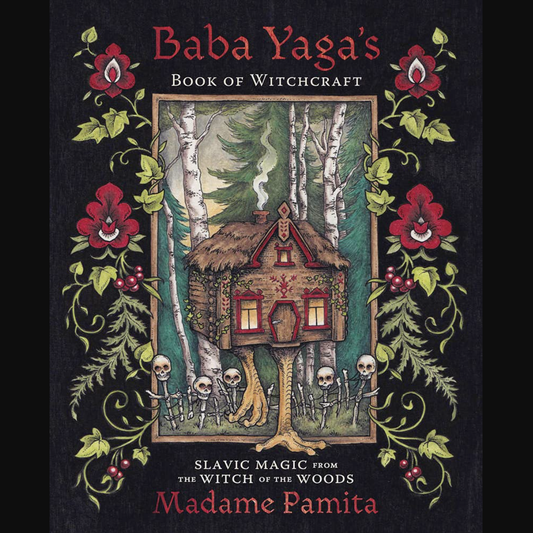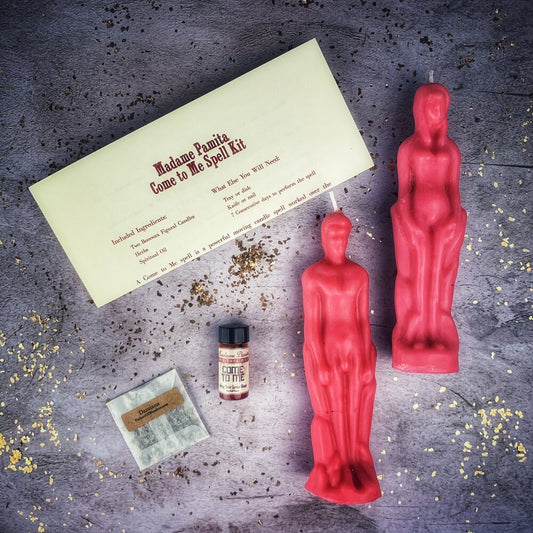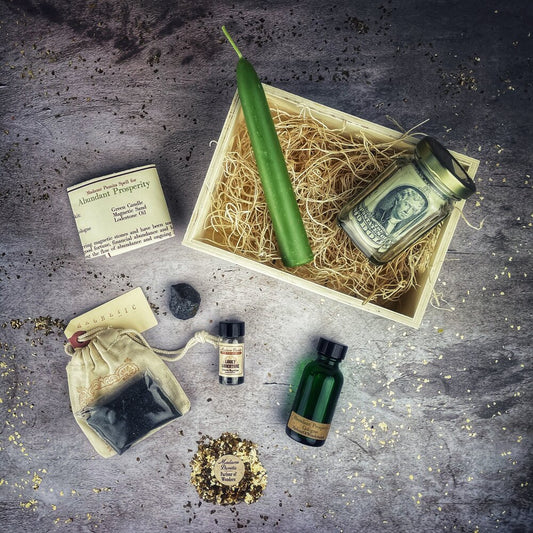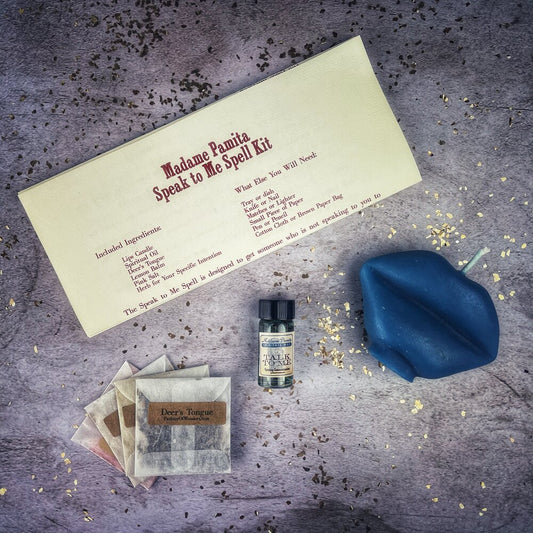
How To Make Crystal Waters: Gem Elixir How To Guide
Share
What Are Gem Elixirs?
Have you heard about gem elixirs, gemstone-infused water, crystal waters and were curious about how to make magical crystal waters? Well, I got you! This Gem Elixir How To Guide will show you how to make crystal waters in very easy and safe ways with things you probably already have at home.
Water is the perfect transmitter of energy. When we make a tea, we are imparting the essence of the herbs into the water and then taking it into our body (which is made up of 60% pure water). The essence of the magical properties of these blessed herbs then becomes part of us!
We are able to do the same with gemstones! Crystal energy can be added to water to make Gem Elixirs. Gem elixirs, which are also sometimes called called crystal essences or crystal waters, have been been a part of medicine and magic throughout the ages. They are very simple to make and can be stored for later use.

How to Make Gemstone Waters
There are two methods of making Gem Elixirs – the direct method and the indirect method. In the direct method, you place the stone directly in the water to be charged with the crystal energy. In the indirect method, you place the stone in a container and that container in the water to impart that crystals energy. Neither method is better or more effective than the other. Gemstones charge whatever they are near, so whether the gem is in the water or in a jar makes no difference. The only caution you should have is that some stones can dissolve in water and others can leech toxic chemicals when placed in water, so if you choose to use the direct method, make sure your stone is safe to put in water (see below for a list of stones that are too toxic to be made via the direct method).

To Make a Gem Elixir (Indirect Method):
Any gemstone can charge water through the indirect method, and there are no safety concerns making a Gem Elixir in this way. To make a Gem Elixir through the indirect method – you can follow these instructions:
You will need:
- One or more crystals
- A small clean glass jar or bowl to hold your crystals
- A large glass or ceramic bowl to hold the water and the jar of crystals
- A large clean glass bottle to hold your Gem Elixir once you have made it.
- Water – The water you use can be spring water (bottled spring water can be purchased, though if possible, from a glass bottle), distilled water, rain water, or morning dew. Try to avoid tap water, as it has been treated with chemicals.
- 80 proof (or higher) Vodka or vinegar of any kind – to use as a preservative and to “fix” the crystal vibrations
- Sunlight, moonlight or a sacred space such as a personal altar or a public temple, or a natural energetic space such as standing stones, a mountain top, a crossroads.
How to Make a Gem Elixir
- Before starting, clear your crystals by placing them in a bowl of dry sea salt or in bowl with a tablespoon of sea salt dissolved in water.
- Program your crystal with your intention by holding it between the palms of your hands and speaking out loud what it is that you would like the crystal to help you with.
- Put your crystals in the small jar (or small bowl), fill with water, close the jar and place the jar in the large bowl.
- Pour water into the large bowl without allowing any of the water to get into the jar or small bowl containing your crystals.
- State your intention out loud – that is, what you would like your Gem Elixir to do.
- Leave the containers in the sunlight, moonlight or sacred space for four or more hours.
- Remove the jar or small bowl and pour the charged water from the large bowl into the large bottle – filling it to about 90%.
- Fill the bottle the rest of the way with the vodka or vinegar as a preservative.
- Empty the water in the small jar onto the earth to give back to the earth that produced the gems.
- Use your Gem Elixir in magic spells, cleansing baths or add to your potions.

Crystal-Infused Waters
Crystal waters are similar to Gem Elixirs but are made without a preservative and are for immediate use. You can drink them or use them in a cleansing bath, as an ingredient in spells, or added to your potions to bring the energy of the crystal to your magic.
To make a Crystal Water (indirect method):
- Before starting, clear your crystals by placing them in a bowl of dry sea salt or in bowl with a tablespoon of sea salt dissolved in water.
- Program your crystals with your intention by holding them one-by-one between the palms of your hands and speaking out loud what it is that you would like the crystal to help you with.
- Place a glass or jar of water on an altar or table
- Place crystals around the glass or jar of water in a crystal grid pattern.
- State your intention out loud – that is, what you would like your Crystal Water to do.
- Leave the jar or glass in the sunlight, moonlight or sacred space for one hour or up to 24 hours.
- When the water has been charged, it is ready to drink or used in your magical practice immediately.
- Crystal Waters can be stored for a few days in the refrigerator in a sealed container, but should be used quickly.


General Precautions for Gem Elixirs
- Soft stones (anything with a mohs hardness of 4 or lower) should not be placed in water as they will dissolve. You can check regarding the hardness of the stones you wish to use by looking them up at mindat.org or gemdat.org.
- Do not make conventional, direct gemstone elixirs, gem waters, massage oils of any stone containing metal (lead, copper, etc.) Use an indirect method instead. FYI: Polished stones are less likely to allow elixirs, etc. to leach any potentially hazardous materials. Rough stones are most likely.
- In general, almost all blue and green stones, especially brightly colored ones, contain copper and/or arsenic and are potentially unsafe to use for conventional gem elixirs, etc. Shiny, metallic stones should be avoided. Don’t handle stones containing arsenic, such as realgar, or mercury, such as cinnabar without protective gloves. Wash hands thoroughly with soap and water after handling them. These stones are extremely toxic.
- Do not eat, drink, or smoke while handling potentially toxic stones. Keep all potentially harmful stones (including small, bite-sized stones that aren’t necessarily toxic but can cause choking hazards!) out of reach of children for safety.

Some Gemstones Are Toxic
Approach any unfamiliar gemstone with caution. You may find contradictory information elsewhere as to the potential hazards of crystals. I recommend being cautious and using indirect methods for making elixirs and other consumables unless you’re absolutely certain of what you’re doing. To be on the safe side, consider the stones listed below, and any stones you are not 100% sure about, to be toxic to eat, drink, or otherwise consume.
The following stones are toxic and gem elixirs should only be made with the indirect method with them:
Toxic Gemstones A-M
- Actinolite – asbestos
- Adamite – zinc, copper
- Amazonite – copper
- Amber – toxic dust, fumes, possible trapped bacteria or virii, possible ingestive toxicity
- Angelite – lead, sulphur
- Anthophyllite – asbestos
- Aragonite – sometimes contains lead
- Atacamite – copper
- Atlantisite – contains Serpentine (see below)
- Auricalcite – zinc and copper
- Azurite – copper
- Boji-stones/Kansas Pop Rocks – may contain sulphur
- Bronchantite – copper
- Celestite aka Celestine – aluminum
- Cerrusite – sulphur, molybdenum
- Chalcantite (aka “blue shit”) – copper
- Chalcopyrite (Peacock Stone, Peacock Ore) – copper and sulphur
- Charoite – barium, strontium
- Chrysacolla (Chrysocolla) – copper
- Chrysotile – asbestos
- Cinnabar – mercury, VERY TOXIC
- Cobaltocalcite (Pink Cobalt Calcite) – cobalt
- Conicalcite – copper
- Copper – copper
- Coral – organic, may contain bacteria as well as pollutants from toxic materials in the water it forms in
- Chrysoprase – nickel
- Crocidolite – asbestos
- Cuprite – copper
- Diopside – copper
- Dioptase – copper
- Eliat Stone – copper
- Emerald – aluminum
- Feldspar – aluminum
- Fluorite – source of dangerous gas hydrofluoride
- Garnet – aluminum
- Gem Silica – copper
- Galena/ Galenite – lead
- Garnierite (Genthite, Falcondoite) – nickel
- Hematite – iron
- Hiddenite – aluminum
- Howlite – boron, boron oxide, borate
- Iolite – aluminum
- Jade (Jadeite) – aluminum, iron
- Jade (Nephrite) – aluminum, iron, titanium
- Kambaba Jasper – cyanobacteria and possible cyanotoxins
- Kansas Pop Rocks – may contain sulphur
- Kunzite – aluminum
- Kyanite – aluminum
- Labradorite – aluminum
- Lapis Lazuli – may contain copper, sulphur
- Leopard (Skin) Jasper – iron
- Marcasite (Markasite) – sulphur
- Magnetite (Lodestone) – iron in large quantities
- Malachite – copper
- Merlinite – barite, iron
- Meteorite – may contain many toxic substances
- Mohawkite – copper, arsenic
- Moldavite – aluminum
- Molybdenum – molybdenum
- Moonstone – may contain aluminum or other toxic substances
- Mother of Pearl – organic, may contain bacteria as well as pollutants from toxic materials in the water it forms in
Toxic Gemstones O-Z
- Ocean Jasper – iron
- Opal – toxic dust for inhalation at least
- Paraiba Blue Quartz – aluminum in the tourmaline component
- Pearl – organic, may contain bacteria as well as pollutants from toxic materials in the water it forms in
- Psiomelane – barium
- Pyrite (Fool’s Gold, Inca Gold) – sulphur
- Quartz (all types) – toxic dust for inhalation
- Realgar – sulfur, arsenic
- Rhodocrosite (Rhodochrosite) – lead
- Rose Quartz – iron / titanium
- Ruby – aluminum
- Sapphire – aluminum
- Sepentine (fibrous type) – asbestos
- Sodalite – aluminum
- Spinel – may contain aluminum, zinc
- Stibnite – lead, antimony
- Smithsonite (Galmei, Zinc spar)- zinc, may contain copper
- Spinel – aluminum
- Spodumene (incl Kunzite, Hiddenite) – aluminum
- Strawberry Quartz (natural) – hematite/iron inclusions
- Stromatolite – cyanobacteria and possible cyanotoxins
- Sulphur – sulphur
- Sunstone – Aluminum
- Tiger’s Eye – asbestos
- Topaz – aluminum
- Tourmaline – aluminum
- Tremolite – asbestos
- Turquoise – copper
- Unakite – aliminum/iron
- Uranium – radioactive mineral
- Vanadanite – lead
- Variscite – aluminum
- Wulfenite – lead, molybdenum
JOIN THE SPELL SQUAD

If you’ve enjoyed this free lesson, I’d love to invite you to get more free magical instruction sent to your email inbox! Join the Spell Squad and you’ll get a free 33-page eBook – “Seven Secrets to Supercharge Your Spellwork” plus the code to join me for my Live Magic Q&A Tea Party where you can ask your questions about magic.
Check out my other how to practice witchcraft guides and learn how to do magic. Want even more? Join The Coven!
